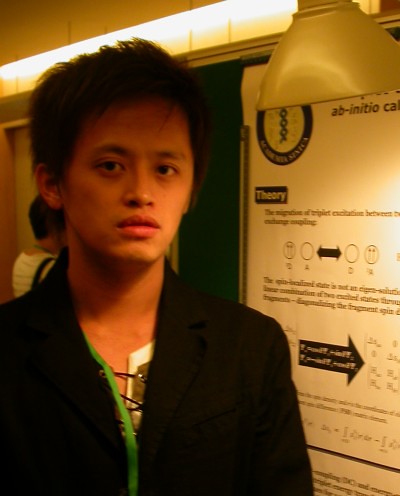Reform the density matrix which is made by a non-orthogonal basis set to a new density matrix in terms of a symmetrically orthogonalized basis set. The diagonal elements of the new density matrix are commonly used for a Löwdin population analysis.
What I do is to extract the coefficient matrix in terms of an orthogonal basis set obtained by canonical orthogonalization from the canonical molecular orbitals. The SCF procedure in Q-Chem keeps the lastest Fock matrices (which is formed by a non-orthogonal basis set) in scratch, named as FILE_TEMP_FOCK. I gonna going to hack or learn from liblas/fock2mo.F which makes a coefficients matrix in terms of a non-orthogonal basis set.
Damn it !! It's not so complicated as I think. Don't worry about the linear dependence problem due to multiplying with the root-squared eigenvalue of the overlap matrix, not dividing it.
The one-particle density matrix in discrete basis can be presented as sum of
Label Cloud
Thursday, November 09, 2006
Löwdin Population Analysis in StS module
Subscribe to:
Post Comments (Atom)
About

- Wesley You
- Taipei, Taiwan
- 3rd Year Ph.D Student in Chemical Biology and Biological Physics of Academia Sinica
0 comments:
Post a Comment